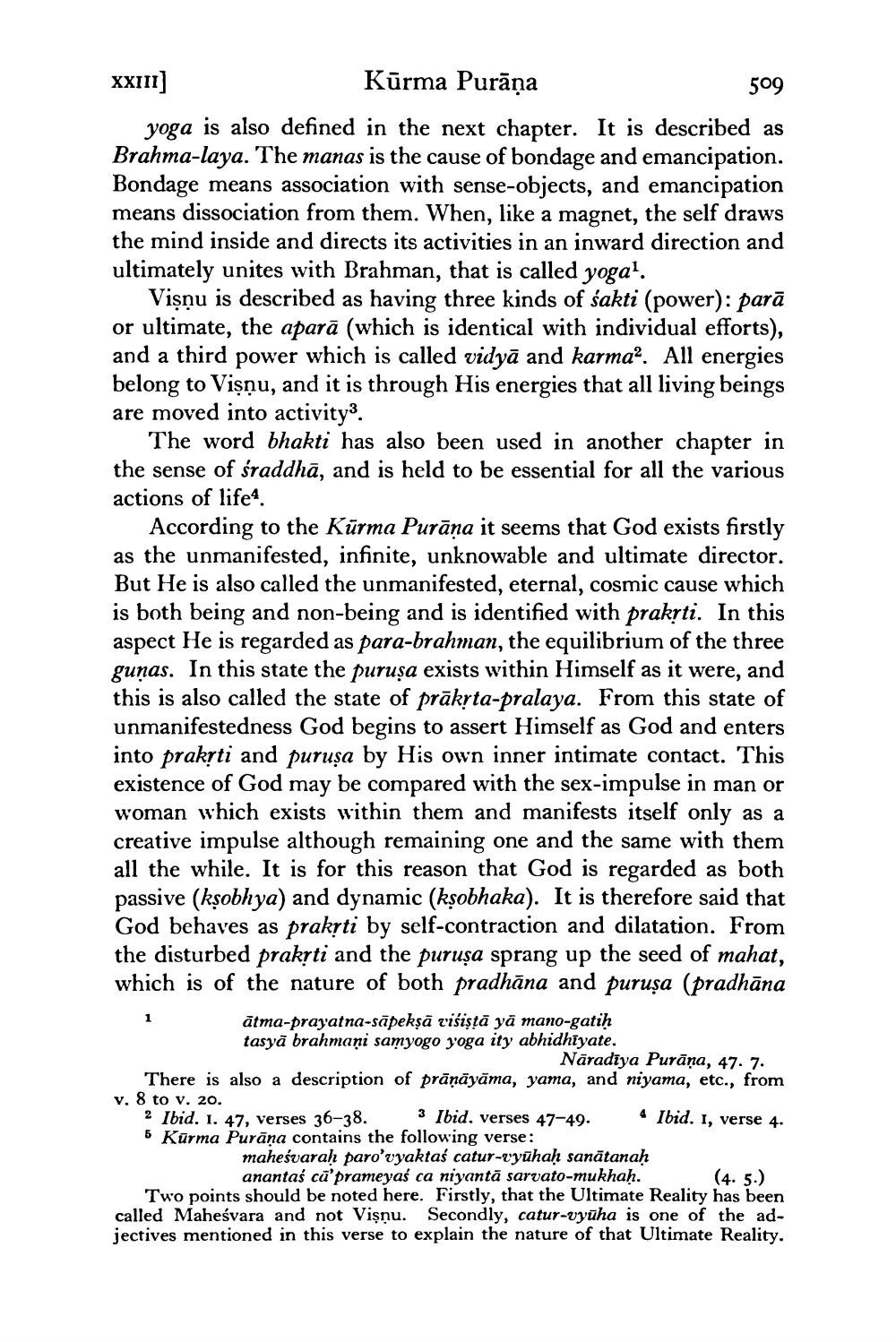________________
XXIII] Kūrma Purāņa
509 yoga is also defined in the next chapter. It is described as Brahma-laya. The manas is the cause of bondage and emancipation. Bondage means association with sense-objects, and emancipation means dissociation from them. When, like a magnet, the self draws the mind inside and directs its activities in an inward direction and ultimately unites with Brahman, that is called yoga'.
Vişnu is described as having three kinds of sakti (power): parā or ultimate, the aparā (which is identical with individual efforts), and a third power which is called vidyā and karma? All energies belong to Vişnu, and it is through His energies that all living beings are moved into activity3.
The word bhakti has also been used in another chapter in the sense of śraddhā, and is held to be essential for all the various actions of life4.
According to the Kūrma Purāna it seems that God exists firstly as the unmanifested, infinite, unknowable and ultimate director. But He is also called the unmanifested, eternal, cosmic cause which is both being and non-being and is identified with prakrti. In this aspect He is regarded as para-brahman, the equilibrium of the three gunas. In this state the purușa exists within Himself as it were, and this is also called the state of prākrta-pralaya. From this state of unmanifestedness God begins to assert Himself as God and enters into prakrti and puruşa by His own inner intimate contact. This existence of God may be compared with the sex-impulse in man or woman which exists within them and manifests itself only as a creative impulse although remaining one and the same with them all the while. It is for this reason that God is regarded as both passive (kṣobhya) and dynamic (kșobhaka). It is therefore said that God behaves as prakrti by self-contraction and dilatation. From the disturbed prakyti and the puruşa sprang up the seed of mahat, which is of the nature of both pradhāna and purusa (pradhāna
ātma-prayatna-sāpekṣā višiştā yā mano-gatiḥ tasyā brahmani samyogo yoga ity abhidhīyate.
Nāradiya Purāņa, 47. 7. There is also a description of prānāyāma, yama, and niyama, etc., from v. 8 to v. 20.
2 Ibid. 1. 47, verses 36-38. 3 Ibid. verses 47-49. Ibid. 1, verse 4. 5 Kurma Purāna contains the following verse:
maheśvarah paro'vyaktaś catur-cyūhaḥ sanātanah
anantaś cũ'prameyaś ca niyantā sarvato-mukhaḥ. (4. 5.) Two points should be noted here. Firstly, that the Ultimate Reality has been called Maheśvara and not Vişnu. Secondly, catur-vyūha is one of the adjectives mentioned in this verse to explain the nature of that Ultimate Reality.




